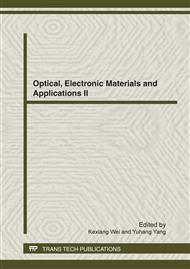p.398
p.402
p.408
p.413
p.419
p.424
p.431
p.436
p.441
Development and Application of Virtual Instrumetation Platform Based on Labview
Abstract:
LabVIEW is a graphical programming environment used by millions of engineers and scientists to develop sophisticated measurement, test, and control systems using intuitive graphical icons and wires that resemble a flowchart. It offers unrivaled integration with thousands of hardware devices and provides hundreds of built-in libraries for advanced analysis and data visualization, all for creating virtual instrumentation.The paper discussed the main features of virtual instrumetation and listed the main industrial applications. The research and analysis is the key function of LabVIEW software and has been detailed summarized. Finally, the author discussed the future development of LabVIEW software.
Info:
Periodical:
Pages:
419-423
Citation:
Online since:
June 2012
Authors:
Keywords:
Price:
Сopyright:
© 2012 Trans Tech Publications Ltd. All Rights Reserved
Share:
Citation:


